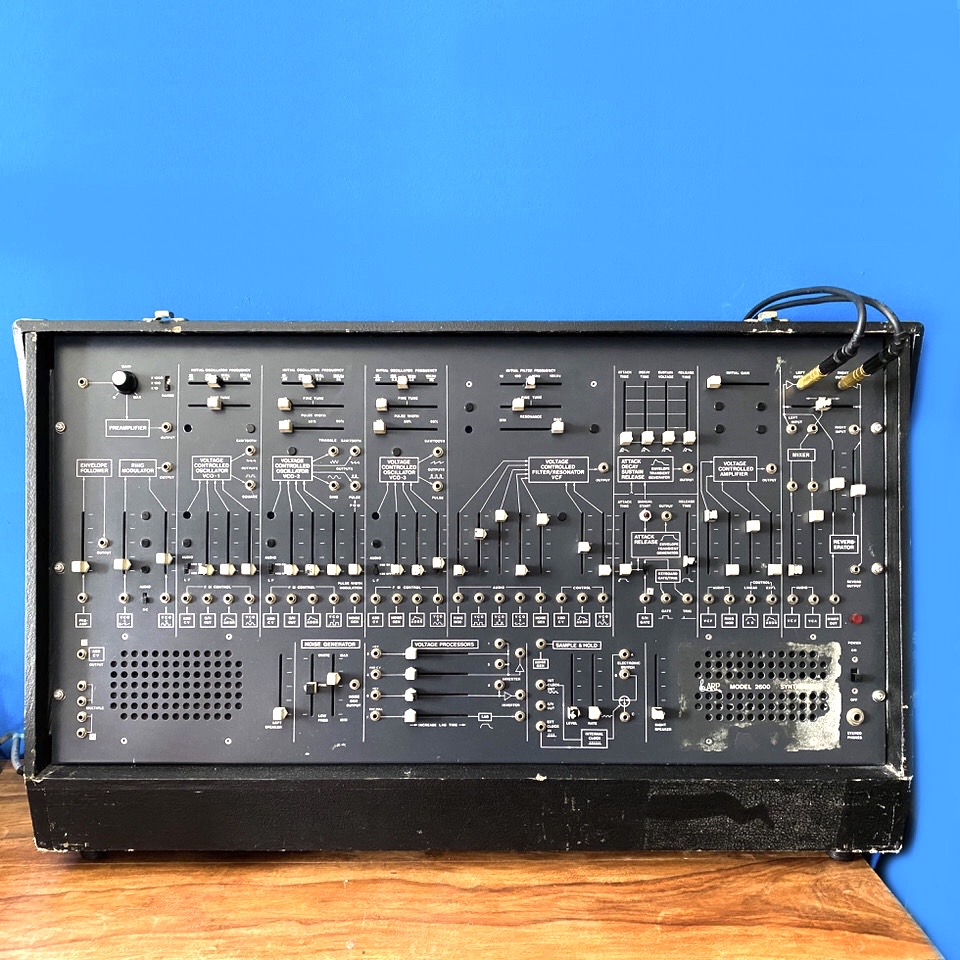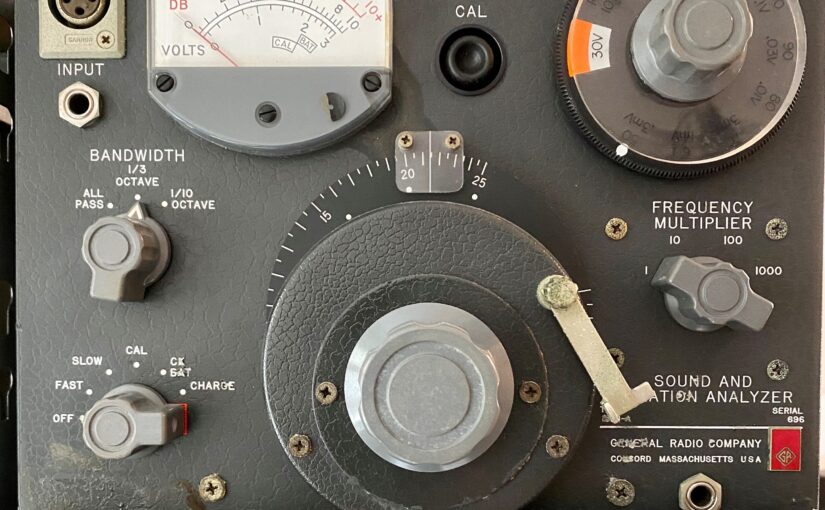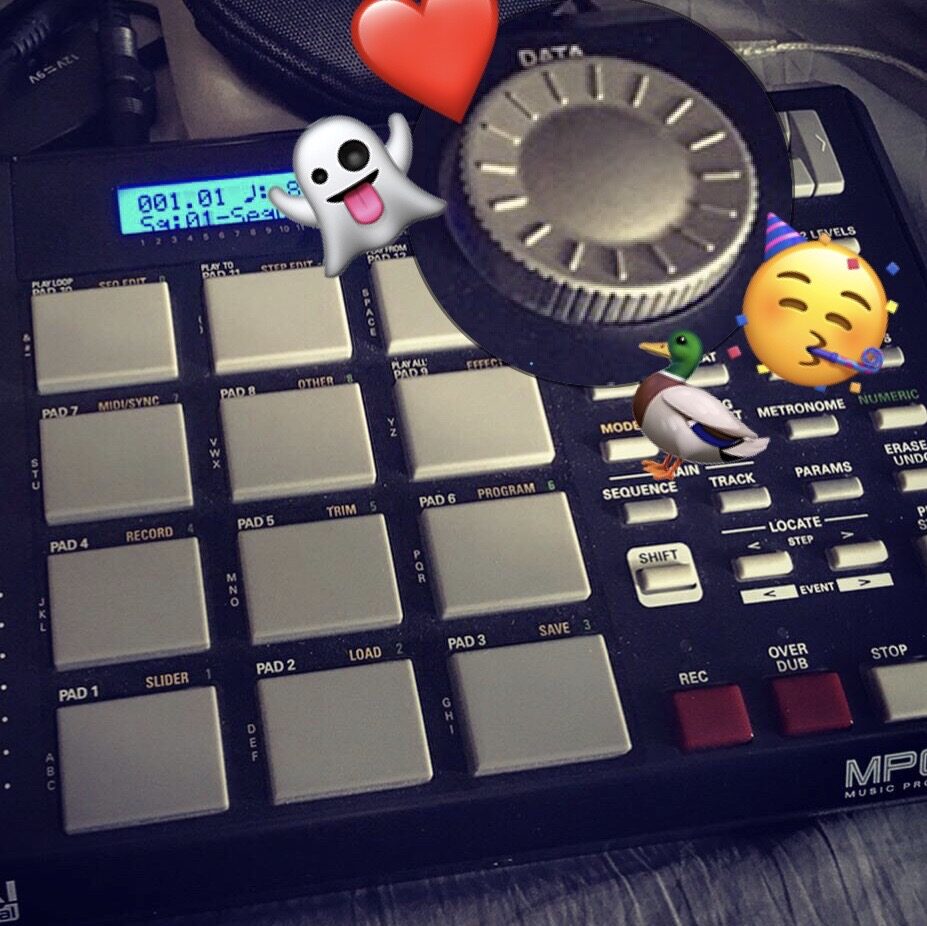1. Favourite knob/fader/switch on a piece of gear and why?
That’s a hard question to answer as every instrument is a composition of different knobs, faders and switches, which are only valuable through their interaction between each other. But if I had to choose one it would be the cutoff knob or fader. I tend to like very mellow sounds especially for inspiration.

My favourite cutoff of all times is the one on my ARP2600, especially with the resonance on maximum. I have never heard a more beautiful and eerie sound.
2. Do you have an ‘almost’ perfect bit of kit? What would you change?

That would be my modular system. It grows and changes with me as I grow and change as an artist, and it’s the perfect instrument for those “happy little accidents”, for experiments, for getting to that next level sound design wise.
What I would change about it? Maybe it would be great to make them less heavy all in all, especially if you want to travel with it.

3. What setup do you bring on holiday/tour/commute etc.?
As much as fits in my suitcase. I usually take a skiff with me, my OP-1, an iPad and my laptop, just to have some options when in a good flow.

4. What software do you wish was hardware and vice versa?
I’d like to have the René by Make Noise as a Plugin, I love that module. It brings that bit of extra spice to my tracks, that I really like. And the Malgorithm, it’s my go to bitcrusher sound that I can’t get enough of so far.
As for the other way around I would love to have the Fabfilter plugins as a module, especially the Limiter. It gives you the volume you need without colouring the sound too much, I use it on every track I make as well as their EQ.

5. Is there anything you regret selling… or regret buying?
Not yet. I surely bought some gear, especially some modules that didn’t fit my workflow after all. But that’s part of the game with modular synthesizers in my opinion, you try, sell, buy, reconfigure and grow with your system (or the other way around?) like you grow musically and as a person throughout life.

6. What gear has inspired you to produce the most music?
I’d say Logic and my modular system. There is so much to explore in each, so many possibilities to learn new things and so much room for „happy accidents.“
I spent a lot of time learning Logic as a rookie, I wanted to know it inside out so I can “play” it like an instrument. And there are several things especially in the beginning you have to figure out before you can produce music without having to think too much, like moving the anchor point in your audio regions or how to get an audio file with a different bpm to fit your track or how to set up the Environment for different purposes and so on. While figuring all that out, I came up with one idea after the other of what I wanted to try and explore musically. Back then I spent every free minute with Logic, it was extremely exciting to unlock all those levels of music creation one by one, it’s actually quite similar like getting addicted to a video game.
And modular instruments are just crazy with all their possibilities, it’s an endless source of inspiration to me for about ten years now. I’ve tried out so many modules by now, I couldn’t count them all. I also got some of them sent to me to write articles about for the german print magazine Sound & Recording, like the Yarns module by Mutable Instruments for example. And now I can’t live without it anymore. They are all very unique and special in their own way, it’s exciting and often eye-opening to make music with them.
7. If you had to start over, what would you get first?
I think I’m pretty ok with how things went and what equipment I got throughout the years. I started out on a PC, learned Logic, Cubase, ProTools, Fruity Loops and Reason at the SAE Institute back then and finally got a Virus TI as my first synth.
The most important thing to me is to learn how for examples DAWs work in general or how synths work in general, so I can translate that knowledge quickly to any other related gear rather than learning just one DAW or one synthesizer in and out and not knowing how to use similar gear from other companies.
That can be pretty helpful especially if your working as an audio engineer or composer and need to work with different tools from time to time.
8. What’s the most annoying piece of gear you have, that you just can’t live without?
That would be the computer per se I suppose. Especially moving to a new computer can be quite unnerving or when your current one gets too slow for all the tasks you want to do.
9. Most surprising tip/trick/technique that you’ve discovered about a bit of kit?
That would be modules with which you can do generative patches, that was a real eye-opener for me. The René module by Make Noise with it’s cartesian sequencer was my first experimental module and I still use it in every patch I make. Being able to set the notes of a scale, but randomizing the order in which those notes are being played can make for some very interesting variations in a patch.
Artist or Band name?
Panic Girl
Genre?
Electronica, Downtempo, Experimental
Selfie?

Where are you from?
I’m currently living in Munich, Germany.
How did you get into music?
I discovered my passion for music very early on when I was a child. I was utterly fascinated with this invisible medium that still seemed to surround me though I couldn’t touch or see it. I already knew back then that I wanted to spend my life with music, in whatever way possible.

I sang in the school choir for several years, learned how to play the piano and the guitar and was playing in bands when I was a teenager. That’s when I got more and more interested with the equipment that we used like the mixing desk, the effects we applied to our instruments or DI Boxes for example. I just wanted to know how they worked. When a good friend of mine told me about the SAE Institute I knew instantly that this is what I wanted to do. I quit my studies at the university and finally started the Audio Engineering Program at the SAE Munich.
What still drives you to make music?
I just can’t do without it, it has been such a vital part of my being since early childhood. I still have tons of ideas I want to try out and there is always so much exciting equipment out there to explore. And there are also inspiring collaborations with for example Anatol Locker. We make experimental music as Lucid Grain, where we create music with our modular synthesizers that none of us could compose on it’s own. It’s like melting two musical minds into new fresh musical pieces. Inspiration is everywhere I suppose, you just have to learn to see it.
How do you most often start a new track?
I need a sound that inspires me to make a full song out of it. That sound can be literally everything, be it a noise from the coffee machine or birds singing, sounds from my modular system, my ARP2600 or my OP-1 for example. I often seem to navigate towards mellow and dreamy sounds and pads, noisy background sounds like from a vinyl player or field recordings. That initial sound then determines where I go from there, if the track needs drums or if it will be a more experimental one, if I feel like singing to it or if some more field recordings would fit well.

How do you know when a track is finished?
The composition part of music making is usually done pretty quickly. It’s the mixing that takes up most of my time. I check it on several loudspeakers and headphones and have to adjust it several times, until it sounds equally good on everyone of them. I also find it very useful to not listen to the track for at least one or two weeks, so you actually have forgotten how it sounds. If you then re-listen and still like it, then I guess you’re good to go.
Show us your current studio


Best creative advice that you’ve ever heard?
One of the sentences that stuck in my head for years is that you shouldn’t listen too emotionally when you’re working on a track, especially during the mixing stage. That’s something I still can’t fully control, sometimes I just need to crank up the volume, dance around and go back to work after that. You need a clear and calm mind for mixing to make those technical decisions, to make a mix work. I could for example drown everything in reverbs and delays, I just love how they sound. But it’s definitely not good for your mix, it gets muddy very fast. So I need to hold back and work on the mix from an mixing engineers perspective to get the most out of it.
Promote your latest thing… Go ahead, throw us a link.
I’m very proud of my latest album “Cake On Jupiter” that I released with Modularfield last year:
https://panic-girl.bandcamp.com/album/cake-on-jupiter
[Editor: Beina a musician now a days means taking on many different roles. Which you can see that people such as Ms. Bahr is very adapt at. Do you struggle with the various roles required to be a productive musician these days? And which roles are the most challenging? Leave a comment below.]
[Editor: Do you have a favorite tip, trick or way of working with any of the gear from this interview?
Then throw a comment below…]



























